The route from Katakolon to Naples takes us straight to the West across the Ionian Sea, then south of Italy into Messina Strait, then into the Tyrrhenian Sea and from there up the coast past Capri. We were very fortunate with the weather today as it was very calm and the Oosterdam provided a smooth ride. Navigational high light of the day was the passage through the Strait of Messina. Last cruise at the early time of 0500 in the morning, today it was at the more decent time of 1600 hrs. in the afternoon. A good excuse for an early cocktail hour. The EXC team provided a commentary about what was there to be seen and the Oosterdam raced with the great speed of 14 knots through the strait.
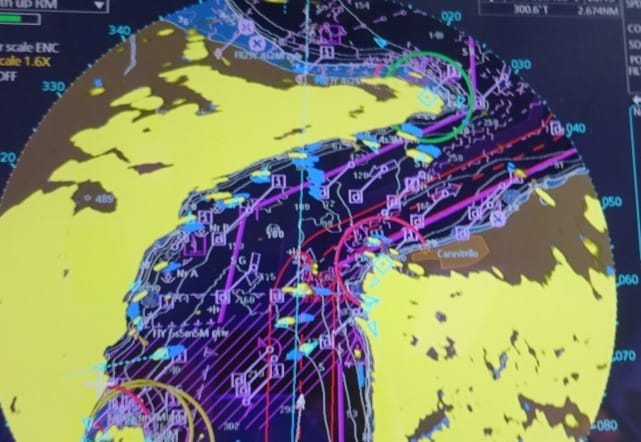
The Strait of Messina. Sicilia to the left and the Italian Mainland to the right. The purple lines are the safe boundary’s of the strait, and the red lines our intended path through the strait. As we are going north we try to hug the starboard side of the strait as much as possible; pending pilots agreement.
Pilotage here is compulsory, not so much for the sailing through as that is very straight forward, but to deal with the ferries which are constantly crossing from the Italian Mainland to Sicilia and back again. Then there are the fishing boats, the other deep sea ships and the six pack navigators and all together it is enough reason for pilotage to be compulsory here. The pilot knows exactly what the ferries are doing and the ferries are not worried as they know that the pilot will do the right thing. Rules of the road do not always work out of here to achieve the fastest crossing solution and so sometimes the ferries cross the bow of the ship and sometimes they go astern. And as long as the ship in question does not do something erratic then it is a safe operation. And the pilot ensures that.
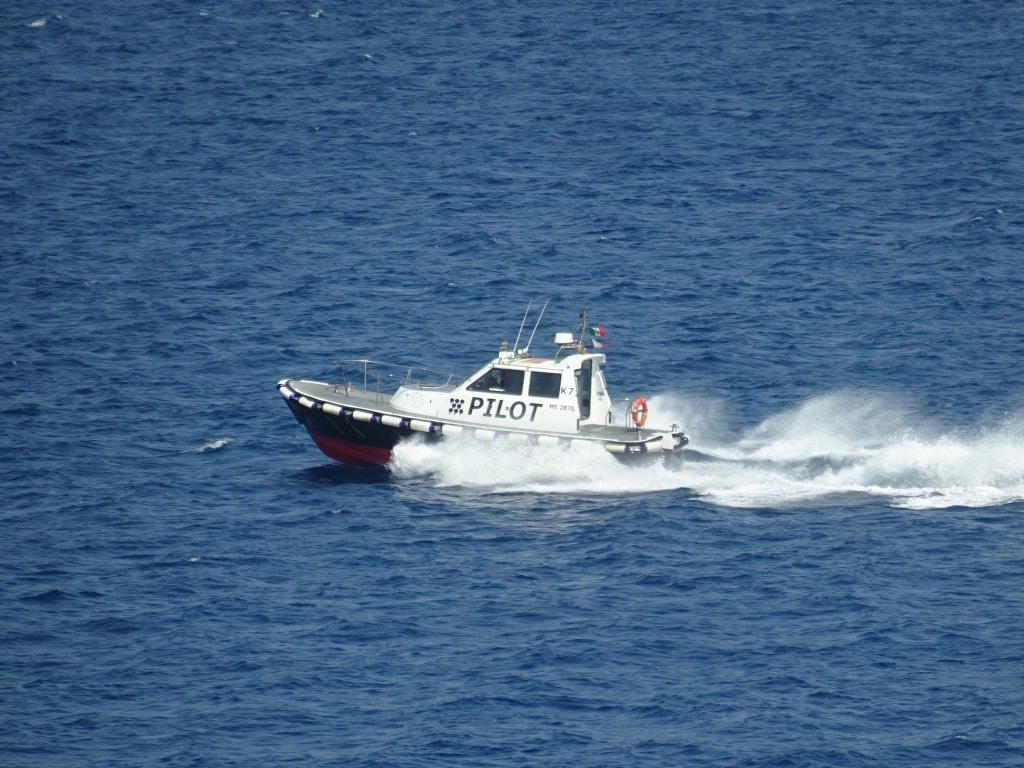
The Messina Strait pilot boat at full speed. This is also the speed they make when they come alongside the ship.
I have yet to meet one captain who is not very happy with the way the pilots come on board. In most ports there is always a fuss about slowing down, making a lee way and once done, the pilot boat skipper changes his/her mind again. Not here; just keep the speed steady and pilot hops on board whether we are sailing with 12 knots, 14 knots or 16 knots. I once did it even with 18 knots. I wish we could send all pilot boat operators for some lessons to Messina. The secret in them being able to it with such high speeds lays in the fact that once going fast the ship creates its own smooth water boundary around the hull. The water that flows away from the bulb is smoothed out and there are no waves, only a bit of swell.
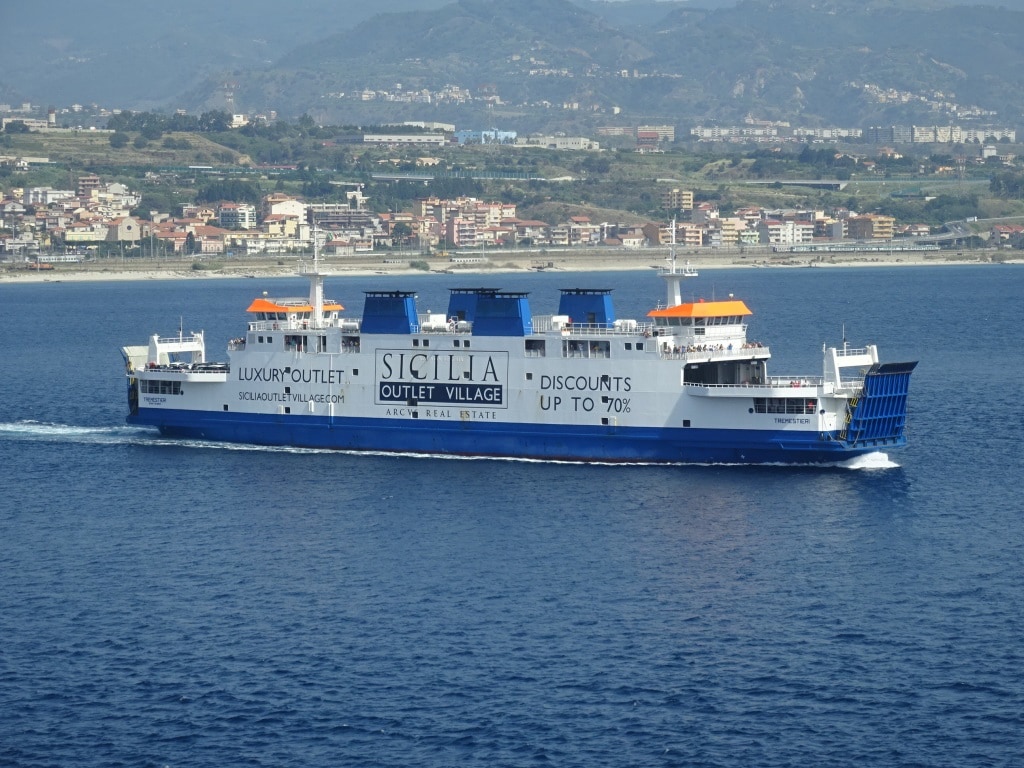
One of the car ferries. As you can see they also have an outlet village in Sicilia.
Also today the pilot raced on board; explained to the captain that the ferries were still going from one side to the other and back again………. and that this would not be a problem. And with that wise information we raced through the Strait. And yes the ferries crossed our bow and they crossed our stern. On the Sicilian side they all dock in Messina or just outside the City border and at the Calabrian side at the town of Villa San Giovanni. Different ferry companies provide nearly the same service. Some of the ferries carry cars and pedestrians and some of them are train ferries which connect the Sicilian railway system with the mainland. That is why the railroad ferries are our biggest worry as they are on a “railway timetable” and therefore do not change course or slow down. Hence the pilot anticipating the schedule and sailing around them. The car ferries have it a little bit easier and those we see slowing down once in all while. (Not too often……………….)
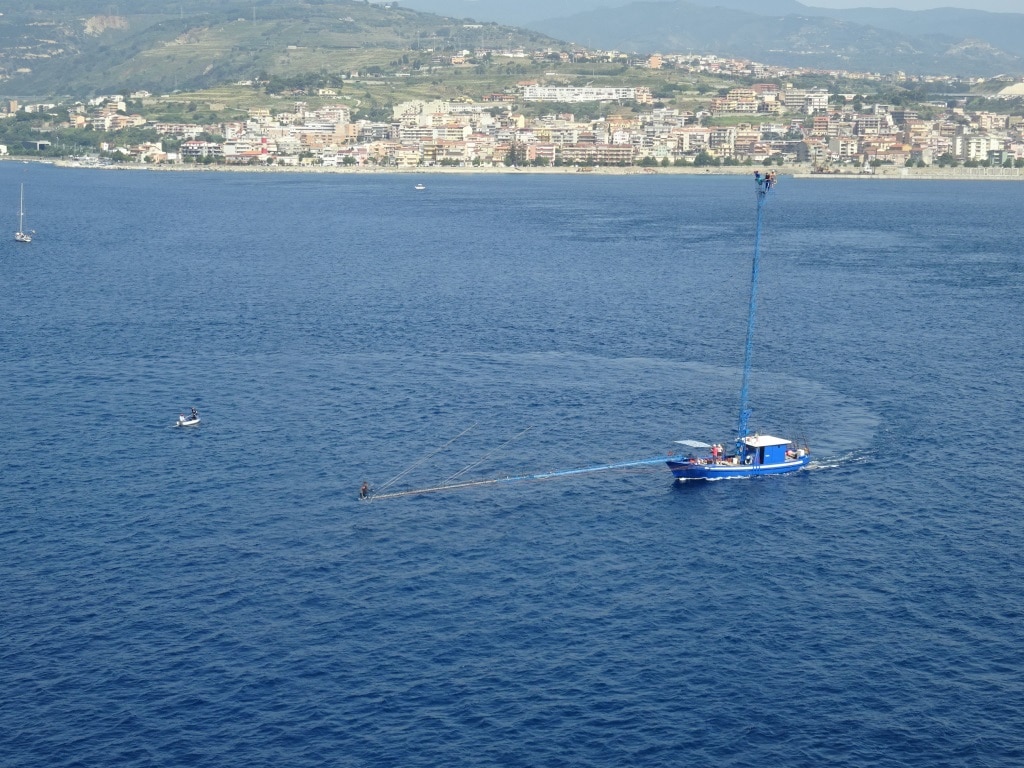
A Marlin hunt in full swing. The harpooner stands on the bow and the skipper and two spotters are high up in the lookout and steering cage.
We had a nice show today with a Marlin fisherman in full operation about 500 feet from the ship. The guests at the starboard side got a real crash course in Marlin fishing. Marlin or Sword fishing is done by a fishing boat called a passerelle and it is not really fishing but a sort of hunting. Therefore the boat has a spotter; he is standing on a 30 meter high pole and looks for the marlin. Now with the modern boats they also have moved the skipper upstairs with the controls of the boat. Sticking out from the bow is a 45 meter long bridge or “passerella”. Here is the harpooner standing. The spotter with the skipper brings the harpooner right above the marlin and that makes the catch easier. The harpooner is standing so far away from the boat to ensure that the marlin cannot hear the boats engine. The average price for one Marlin is between $400 and $500 and that can make you a good living if you are skilled enough to find them and to catch them.
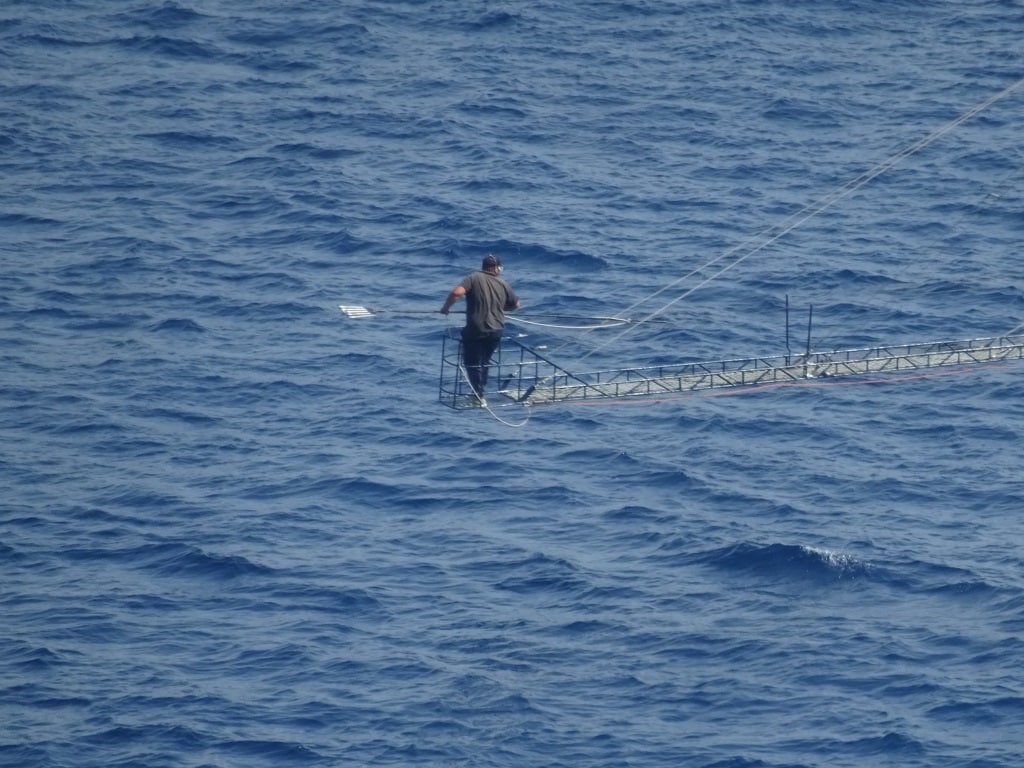
The harpooner with the harpoon ready to throw as soon as he is maneuvered above the marlin.
40 minutes after the pilot came on the bridge he left again and the ship continued to Naples. Around 18.30 we will do a quick sail by the Volcano Stromboli but although the Volcano is always active it is seldom active in a spectacular way. Hence we do not know if we will see something.
Tomorrow we are in Naples, together with the Norwegian Epic, that is that NCL cruise ship with the black shoe box on top of the bridge. We will follow her in and we should be docked just before 08.00 hrs.
Weather: sunny again 28oC / 82 oF and very little wind. There is supposed to be some rain during the coming night and that will help to freshen things up before we arrive.
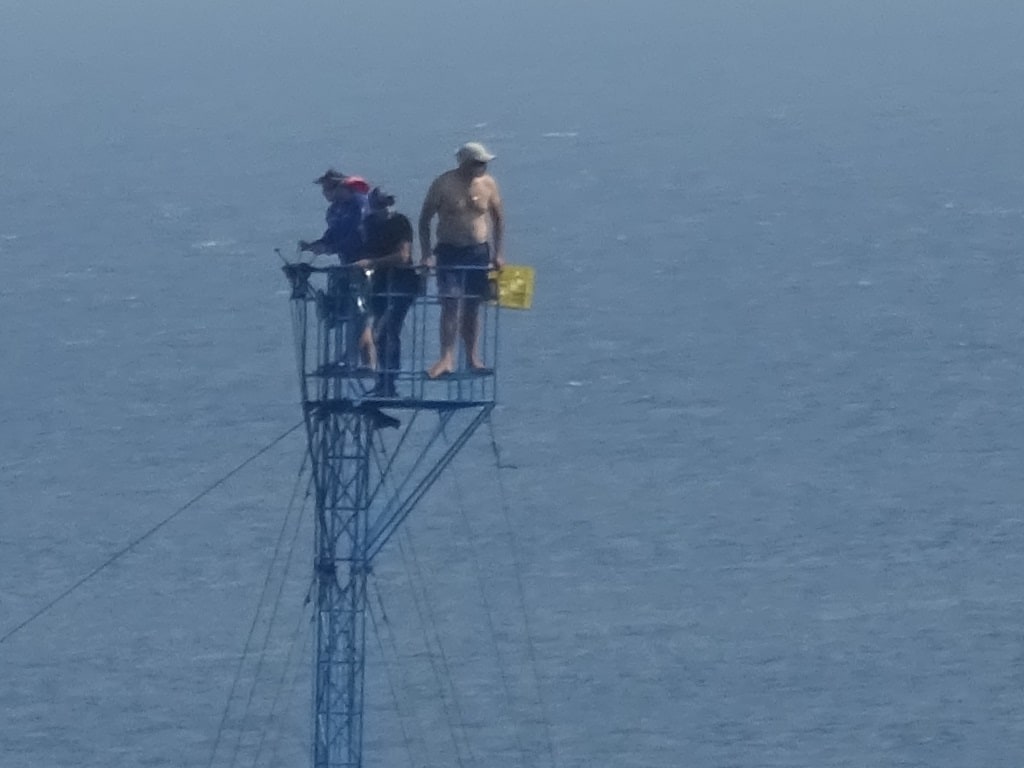
The spotters and the skipper on the boat controls. 30 meters above water so not good if you have high anxiety. I also wonder if you get sea sick from the pendulum motion as the skipper is cutting the corners as tight as possible to get lined up behind the fish. And I also wonder if that guy climbed that steel lattice tower with his bare feet as I do not see shoes anywhere.

July 17, 2018 at 1:19 am
Many thanks for this once again interesting read. Great to see the former “Koning Beatrix” build by the Schelde wharf in Flushing still going strong in Italy. Between 1993 and 2004 it daily sailed between Flushing and Breskens over the Westerschelde. I sailed them regularly going for sport games to Zeeuws Vlaanderen.